Biographies & History in Magic & Mentalism: page 6
Authors
Products
Archives of Human Prodigies 2
Giovanni Iuliani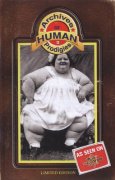
Freaks, strange people, monsters, and even prodigies are some of the words used to describe the human beings that you will find in this ebook. While we realize that today many of these words might be considered "politically incorrect" we have taken the liberty of using these terms insofar as to better communicate the mindset of the sideshow people of that era. No disrespect is intended.
At the time, sideshows went by many different names, among these: dime museums of one kind or another and tent attractions, fronted by huge banners, depicting very unusual people and or animals. Curiosities...
Archives of Human Prodigies 1
Giovanni Iuliani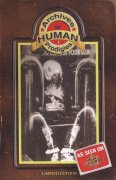
There once was a dream world that travelled at night on a train full of possibilities. This was the Golden Age of the circus (1880-1930s). Aboard this magical train, you would find circus performers, a menagerie of exotic animals and those known as "freaks".
Also called human prodigies, the "freaks" were born with special physicalities. Among these were giants, midgets, siamese-twins, etc. All were gathered inside a giant tent known as the sideshow (or annex attraction).
Get ready to see many astonishing if not shocking pictures. The Archives of Human Prodigies is published in three...
That Other World
Stuart Cumberland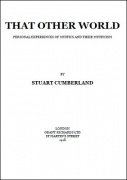
A witty memoir-like debunking of all things paranormal.
Stuart Cumberland describes the fascination of European kings and queens with the occult. He gives a detailed analysis of how Rasputin participated in the fall of the Romanovs. He thoroughly skewers the German government of Wilhelm II. He describes the fake spirit photography, the false claims of clairvoyants, how folks fall for physical manifestations of the spirits such as table rappings. Overall a fun read and expose of human gullibility.
- Chapter I: By Way Of Introduction
- Chapter II: Monarchs And Mystics
- Chapter III: Concerning...
People I Have Read
Stuart Cumberland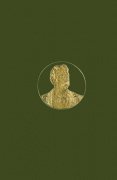
Cumberland was a muscle reader who did not claim to possess any psychic abilities. In this work he recounts many such 'thought-reading' encounters with notable people.
From the introduction:
I have visited many courts and travelled in many lands and have, from time to time, been brought in close contact with the world’s rulers and those who have made their mark in the world’s history. With a great number of them I have performed actual experiments, whilst others I have read without the direct application of any experiments at all.
Upon the correctness of my reading in connection...
Freaks
Giovanni Iuliani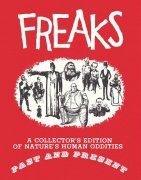
The renowned sideshow showman Ward Hall reminisced about the time Ringling Bros. and Barnum & Bailey Combined Circus attracted a record-breaking crowd of over 20,000 people inside the sideshow. "The Greatest Show on Earth" was playing Montreal during the 1950s. However, over a decade later, Giovanni Iuliani surpassed this world-breaking record many times over.
200,000 ATTENDANCE RECORD!
In 1966, Giovanni Iuliani presented 5 major freak phenomena alive on a high elevated stage at two Montreal movie houses. These high attendance halls each featured on their giant screen the classic horror...
The Reference Guide to Early Works on Card Cheating
T. Hayes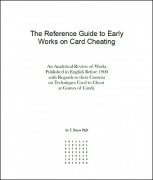
This ebook presents an analytical review of works on card cheating that are written in English and published before 1900. Given this scope, The Reference Guide to Early Works on Card Cheating takes 151 publications, and documents the card cheating techniques that they describe. Only card techniques discussed in the context of cheating at card games are considered. The 146 defined techniques are used to evaluate the publications based on their breadth and their contribution to the literature. The breadth is indicated by the absolute number of techniques each work describes, and the contribution...
Programmes of Magicians
J. F. Burrows
Showing at a glance the tricks performed by all the leading conjurors, extending over a period of forty-two years, from 1864 to 1906.
- Robert Heller
- Warren Wright
- Prof. Duval
- Signor Bosco
- Prof. Fuller
- Mons. Kellar
- Verbeck
- Prof. and Maude Anderson
- Prof. Anderson
- Herr Frikell
- Dr. Holden
- Prof. Hoffmann
- Bautier de Kolta
- Prof. Devono
- Herr Döbler
- Hartz
- Prof. Duprez
- Dr. Lynn
- Servais Le Roy
- Hercat
- J. N. Maskelyne
- Harry Kellar
- Imro Fox
- Prof. Hulbert
- David Devant
- Prof. Weber
- Prof. Geo. Davison
- Charles Bertram
- Dr. Nix
- Prof. St. Clair
- Chevalier Thorn
- Fred Harcourt
- Charles Karnak
- De Biere the Mysterious
- Paul Valadon
- Charles Morritt
- Melot Herman
- Carl Hertz
- Martin...
It's Better Than Digging Roads
Ken Brooke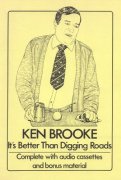
Ken Brooke was known throughout the world of magic. He was a magic dealer who achieved such a reputation for reliability and quality that there are thousands of magicians throughout the world, amateur, and professional who bought almost every trick he produced. Visitors from every country in the world made a beeline for his studio within minutes of arriving in London because just to visit Ken Brooke was an experience not to be missed. In partnership with Frank Farrow, he built the Ken Brooke Magic Place into a magical institution second to none. Considered by many to be the greatest magical...
Searching for Erdnase
Richard Hatch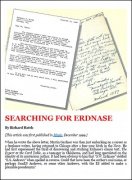
This article succinctly critiques the Milton Franklin Andrews case, and introduces us to two at the time new suspects, James DeWitt Andrews and Edwin Sumner Andrews.
This article first appeared in the 1999 December issue of Magic Magazine, except for this release Richard Hatch added two pages introductory notes to better frame his article in the historical context of the hunt for Erdnase. The article is also essentially the talk Richard gave at the 1999 Los Angeles Conference on Magic History.
1st edition 1999 (intro 2021), PDF 16 pages.
Prophetical, Educational and Playing Cards
John King van Rensselaer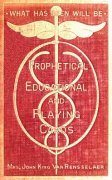
This work explores the history, meaning, and uses of playing cards.
From the foreword:
If an apology is needed for writing again on the subject of playing cards, the excuse may be offered that new lights have been turned on the subject, so that there is fresh information to lay before the public, derived from a close and exhaustive study of the European libraries and museums, as well as of the pictures on the Playing Cards themselves or prints found in those repositories, and also in the collection owned by the writer; for these speak their histories to those who regard their symbols with...
The Man Who Was Erdnase
Barton Whaley & Martin Gardner & Jeff Busby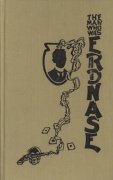
This book won the SAM Special Library Award. It details Martin Gardner's, Jeff Busby's, and Bart Whaley's search to uncover the person hiding behind the pseudonym S.W. Erdnase. It lays out in detail the case for Milton Franklin Andrews. It describes the life of Andrews, how he started with magic, and how he transitioned to become a card shark, including his travels around the world hustling and cheating to make a living.
A detailed analysis of Erdnase's likely sources and inspirations, as well as other information about the book, its reprints, and other pertinent information, will help every Erdnase...
As Told On A Sunday Run
Harry P. Bowman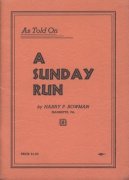
A collection of basic information about circuses small and big, their names and when they were in operation.
- War Time Circus
- Shows Harry Bowman was connected with
- Famous Firsts in Circus History
- Circus Wrecks and Accidents
- Circuses and Tent Shows (in alphabetical order)
1st edition 1942, 31 pages; PDF 75 pages.
Count Cagliostro
Thomas Carlyl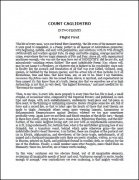
This is Thomas Carlyle's long essay on Count Cagliostro, published in 1833 in Fraser's Magazine. He is examining the hero and his shadows - what was false about Cagliostro. Cagliostro was a Sicilian mountebank, whose lasting notoriety was a bit part in the Diamond Necklace Affair that rocked pre-Revolutionary France, and whose most enduring work was the confession extracted by the Roman Inquisition, a tome published in 1792, three years previous to Cagliostro's demise in an Inquisitional cell.
1st edition 1833, 61 pages; PDF 42 pages.
The Napoleon Myth
Henry Ridgely Evans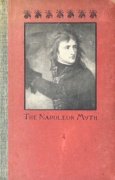
(We are carrying this ebook primarily because of the author, Henry Ridgeley Evans, who published several interesting books on conjuring.)
On its face the book is about the myth that Napoleon never existed. It was at one time a popular myth, hoax, or fake news as it would be called today. It also provides interesting lessons and insights on how myths can develop. Since there are a number of myths in the world of conjuring, this work can help one understand why and how some of the myths in magic may have developed.
- Introduction
- Grand Erratum. The Non-Existence of Napoleon Proved
- The Mythical...
The History of Playing Cards
Ed. S. Taylor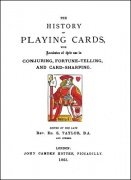
Includes chapters on conjuring, fortune-telling and card-sharping.
- Preface
- Part The First. The History Of Cards
- I. Introduction
- II. Oriental Origin Of Cards
- III. Introduction Of Cards Into Southern Europe
- IV. Date Of Introduction Of Cards
- V. Introduction Of Cards Into France
- VI. The Cards Of Charles VI
- VII. Invention Of The French Cards And Game Of Piquet
- VIII. Cards In England
- IX. History Of Tarots, As Told By Themselves
- X. Modern History Of French And English Cards
- XI. The Application Of Cards To Science
- XII. Card Miscellanies
- Part The Second. Card Playing And Card Players...
Cagliostro: The Splendour and Misery of a Master of Magic
W. R. H. Trowbridge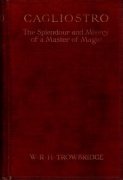
This is a very good book on Cagliostro, because Trowbridge does not simply parrot the opinion of other authors who wrote about Cagliostro, but he did his own research and came to his own conclusions. One can certainly argue about some of Trowbridge's conclusions, but overall this is a very thorough and detailed description and analysis of Cagliostro's life.
- Preface
- Bibliography
- Part I
- Chapter I: The Power Of Prejudice
- Chapter II: Giuseppe Balsamo
- Part II
- Chapter I: Cagliostro In London
- Chapter II: Eighteenth Century Occultism
- Chapter III: Masked And Unmasked
- Chapter IV: The...
Cagliostro and His Egyptian Rite of Freemasonry
Henry Ridgely Evans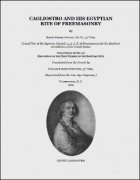
Evans raises the possibility that Cagliostro's real name might not have been Giuseppe Balsamo, as well as describes his Egyptian Rite of Freemasonry.
- Introduction
- PART I.—A Master Of Magic
- PART II.—The Egyptian Rite
- PART III.—A Visit To The House Of Cagliostro
- PART IV.—Reception Of An Apprentice In An Egyptian Lodge
Cagliostro
Henry Ridgely Evans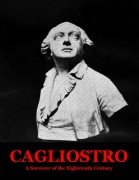
Count Alessandro di Cagliostro, by real name Giuseppe Balsamo, was an Italian occultist, mentalist and magician, who managed to achieve entry into the royal courts of Europe where he practiced various occult arts, mentalism, magic, alchemy, etc. His fame continued beyond his death, but eventually he was labeled a charlatan. Regardless of how one wants to portrait Cagliostro, there is a lot magicians and mentalists can learn from him and his exploits.
- Proem
- I. A Master of Magic
- II. The Conjurer and the Cardinal
- III. The Affair of the Diamond Necklace
- IV. The Downfall of the Grand Cophta ...
Adventures in Magic
Henry Ridgely Evans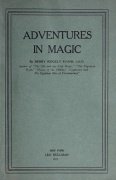
From the Foreword:
Some Rare Old Books on Conjuring and Magic
Henry Ridgely Evans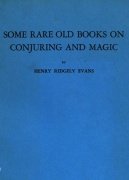
From the introduction:
Magic has been divided into (1) White Magic, or the evocation of angels and beneficent powers; (2) Black Magic, or the summoning of demons; and (3) Natural Magic, or feats performed by dexterity and mechanical appliances, etc. Although believing implicitly in white magic and black magic, the medicine men, spirit doctors, and hierophants of olden times did not disdain to use natural means also to overawe and surprise their votaries.
...
With the passing of so-called genuine magic or sorcery we see the rise of natural magic and conjuring. In the Middle Ages conjurers...
Conjurers
Arthur Watson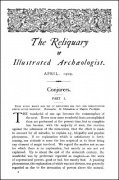
A very interesting article about early conjuring, conjurers, books and manuscripts. Includes detailed research on how the term 'hocus pocus' came about.
Up to about the end of the sixteenth century, the wonderful was by preference regarded as magical—as the work of supernatural powers, good or bad, but mostly bad. A puzzling phenomenon, the explanation of which was not obvious, was generally regarded as due to the invocation of powers above the natural. Many of the feats ascribed to demoniacal or divine aid are such as we know to be similar to the tricks included in the conjurer’s repertory....
History of Conjuring and Magic
Henry Ridgely Evans
Henry Ridgely Evans provides an account of the history of conjuring, from ancient Egypt through the Middle Ages and into the 20th century. He develops biographical portraits of many well-known magicians and includes descriptions of their acts. Perhaps the most unusual feature of the work is that at the very end he includes photos of the hands of many famous magicians.
From the Proem:
With the passing of so-called genuine magic or sorcery we see the rise of natural magic and conjuring. In the Middle Ages conjurers were mere strolling mountebanks who exhibited their feats at fairs, in barns,...
The Lives of the Conjurors
Thomas Frost
This is considered one of the best early histories of magic.
From the Preface:
The present volume closes the series of works on the entertaining classes which I contemplated when writing Circus Life and Circus Celebrities, the greater part of which was written before The Old Showmen and the Old London Fairs was commenced, though the publication of the latter work preceded that of the former. In embracing within the present volume the lives of the conjurors of every period and every country, while the record of shows and showmen is confined to London and the suburban districts, (which may now be said to embrace a circle of twenty miles across,) and that of circuses...
Born on the Highwire: The Autobiography of Arthur Duchek
Patrick Davison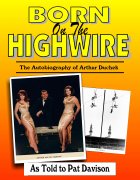
Arthur Duchek, born (almost literally on the highwire rigging of his parents' circus act) into a European circus dynasty in 1930, grew up to be a world-famous circus and variety artist and international entertainment agent.
He survived a devastating accident on the circus lot as a 4-year old child, an accident that left him with a speech impediment. His will power and determination, along with the help of an eccentric Parisian speech therapist, helped him overcome this obstacle. After joining his uncles with the circus in America, Arthur experienced unbelievable abuse at their hands.
You...